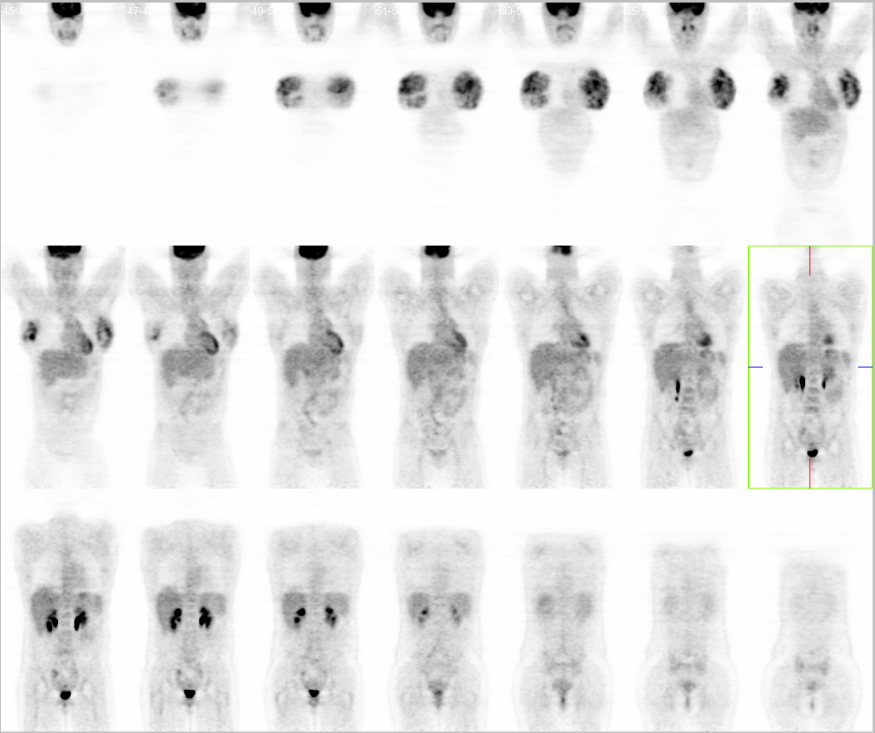Case Author(s): Jabi Shriki, M.D., Kelsey Moran, M.D., and Farrokh Dehdashti,
M.D. , 06/19/06 . Rating: #D2, #Q.
Diagnosis: Physiologic uptake of FDG in both breasts due to breast feeding.
Brief history:
22-year-old woman with a history of stage III-b Hodgkin's disease, status post 6 cycles of chemotherapy in 2004.
Images:

Coronal, attenuation-corrected, whole body, PET images are shown.
View main image(pt) in a separate image viewer
View second image(pt).
Axial, fused PET and PET/CT images are shown.
Full history/Diagnosis is available below
Diagnosis: Physiologic uptake of FDG in both breasts due to breast feeding.
Full history:
22-year-old woman with a history of stage III-b Hodgkin's disease, status post 6 cycles of chemotherapy 18 months prior to FDG-PET imaging. The patient underwent childbirth and is currently breast-feeding. The patient was instructed not to breast-feed for at least 8 hours after the study. This FDG-PET/CT imaging was to evaluate for recurrent disease. A prior FDG-PET/CT scan done at the time of completion of treatment showed post-treatment changes with no evidence of residual lymphoma.
Radiopharmaceutical:
2-deoxy-(2,2)18F-fluoro-D-glucose (FDG)
Findings:
Bilateral, symmetrical increased uptake of FDG is present in both breasts due to current lactation/breast feeding.
Discussion:
In the setting of breast feeding, several patterns of uptake have been described including crescentic, focal, diffuse and irregular patterns. The important point is that FDG is not excreted in the milk, but it concentrates in the breast glandular tissue.
Although in the appropriate clinical setting, this can be distinguished from tumor, it is important that the nuclear medicine physician be familiar with causes of physiologically increased uptake in the breast in order to advise the patient regarding radiation exposure to an infant. Recommendations vary in the literature, but typically cessation of breast feeding for 8 hours after administration of FDG will be sufficient.
Other radiopharmaceuticals which will accumulate in the breasts during breast feeding include gallium and iodine.
References:
Hicks et al. 42 (8): 1238. (2001)
Journal of Nuclear Medicine
Hamblen and Lowe 31 (1): 3. (2003)
Journal of Nuclear Medicine Technology
Major teaching point(s):
Breast feeding is a physiologic cause of increased uptake of FDG by the breasts. In the appropriate clinical setting, this should not be confused for a neoplastic process.
ACR Codes and Keywords:
References and General Discussion of PET Tumor Imaging Studies (Anatomic field:Breast, Category:Normal, Technique, Congenital Anomaly)
Search for similar cases.
Edit this case
Add comments about this case
Return to the Teaching File home page.
Case number: pt147
Copyright by Wash U MO

